'Academia became a reality': Students learn about residential schools from their survivors
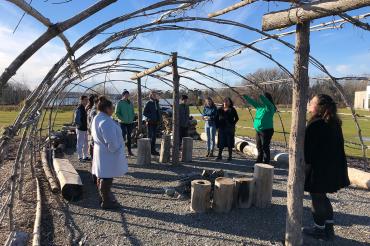
Published: January 26, 2023
Lydia Dillenbeck stepped into a former residential school chapel and was fascinated with the structure – until she learned who built it.
“I felt comfortable in the space until our tour guide told us the building had been built by children ages 8 to 15,” says Dillenbeck, a first-year social sciences student at the University of Toronto and a member of St. Michael’s College.
“Suddenly, I wasn’t just reading about history; I was sitting on it. The pew I was sitting on was made by children. The comfort I felt was replaced by disgust.”
Reading a death registry in the church and visiting a graveyard where children are believed to be buried only added to Dillenbeck’s turmoil. “Within the span of 30 minutes, we were confronted with the realities of the residential school system in the forms of child labour and children’s deaths,” she says.
Dillenbeck and three other students toured the Shingwauk Residential Schools Centre at Algoma University in Sault Ste. Marie, Ont. during the November reading week. The visit to the chapel was part of the International or Indigenous Course Module (ICM) portion of the St. Michael’s College seminar course: The Christianity, Truth and Reconciliation Seminar. The course explores the complex relations of Christianity and Indigenous peoples of Turtle Island. The Faculty of Arts & Science’s ICM program provides undergraduate students with the opportunity to travel outside Toronto, often internationally, for a hands-on learning experience.
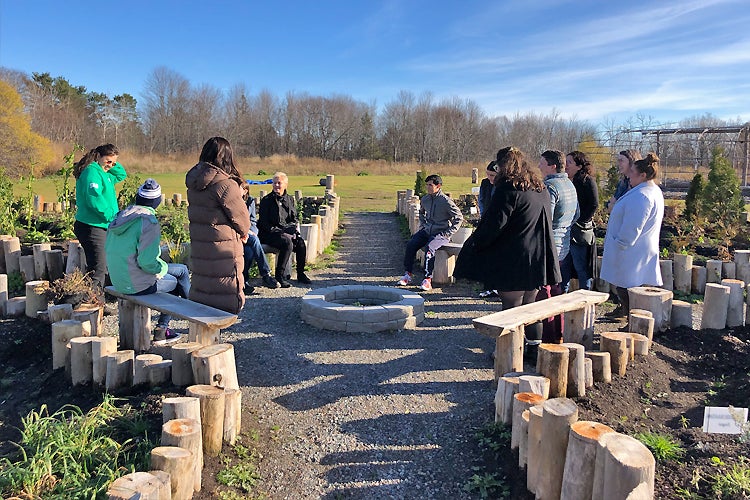
Outdoor learning at the Shingwauk Kinoomaage Gamig teaching lodge (photo by Reid Locklin)
Topics covered by the course include: the life stories of prominent Indigenous leaders; the emergence of Canada as a settler state and the history of the residential school system; and themes of conflict and engagement including apologies and reparations, education, treaty relationships and land.
“The purpose of the trip was to spend a week thinking about the residential school system by being on a residential school site, and doing work connected to that site,” says trip organizer, Reid Locklin, an associate professor of Christianity and the intellectual tradition at U of T, a joint appointment with St Michael’s College and the department for the study of religion.
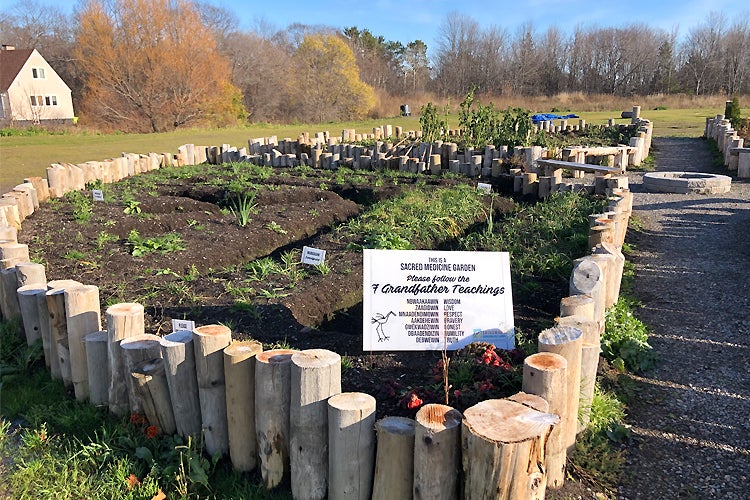
A sacred medicine garden at Shingwauk Kinoomaage Gamig (photo by Reid Locklin)
Dillenbeck and the other students received archival training from the Shingwauk staff, met with residential school survivors and engaged in a variety of activities that celebrated Indigenous culture and communities.
She says the experience was deeply moving and transformative, adding that she appreciated the small group as well as the instructors who provided guidance and support.
“Their support was especially valuable given the emotional challenge of the course material,” Dillenbeck says.
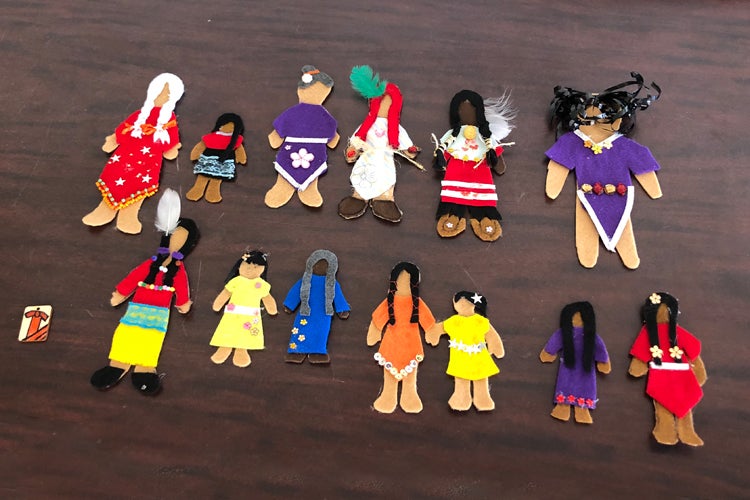
The faceless dolls workshop, hosted by the Native Women’s Association of Canada (photo by Reid Locklin)
Zoe Wong, also a first-year social science student, and a member of New College, shared Dillenbeck’s appreciation for the connections made within a small group.
“I enjoyed [being] in an intimate space alongside my professor and classmates,” says Wong. “This rare space allows us to truly connect with one another and unite our unique experiences in a powerful setting closely related to our course content.”
Locklin, Dillenbeck, Wong and the other students were also grateful for the insights provided by Lorrie Gallant – an artist, writer and educator from Six Nations of the Grand River Territory, Cayuga Nation from the Turtle Clan. She is an intergenerational survivor of the Mohawk Institute Indian Residential School and a former education program co-ordinator at the Woodland Cultural Centre in Brantford, Ont.
“Lorrie was an enormous help to us,” says Dillenbeck. “She recounted stories and led us through reflection exercises every day.”
“She brought an even wider wisdom and knowledge from her own biography and experience,” says Locklin. “All of that gave the students a real living experience of residential schools.”
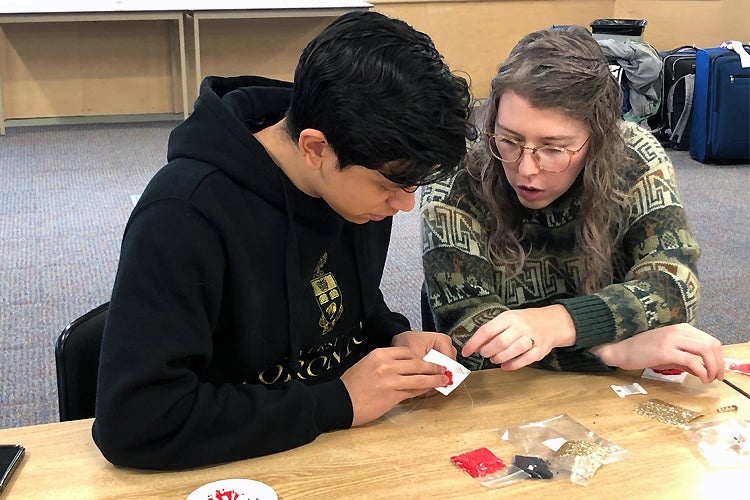
Alexander Gomez Sanchez works with Jenna Lemay, a Shingwauk Residential School Centre digital archives technician (photo by Reid Locklin)
Dillenbeck and Wong found listening to the stories of residential school survivors powerful, bringing an added dimension to their studies.
“Academia became a reality,” says Dillenbeck. “It felt pretentious to analyze and discuss their stories the same way we would in class – sitting and listening was better. And I valued meeting with survivors because they embodied hope and reconciliation.”
Wong describes engaging with the survivors as, “an encounter I cannot forget.”
“When they spoke about their experiences as children at the site we were sitting in, it was like witnessing a richly depicted journal speak. Their expression of terror and desperation interspersed with tints of gratitude and joy translates more effectively than ever through their spoken words. Our ability to respond and ask about their experiences amplifies this impact, strengthening our insights and perceptions regarding Christianity, Truth and Reconciliation.”
Locklin also found the survivor stories moving and experienced a shift from teacher to student.
“Accompanying the students on the trip for the first time, I wasn’t in a very different situation than they were in terms of my lived encounters with the residential school system in Canada,” says Locklin.
“I teach at the university, so I'm used to being the expert. One of the values of experiential learning is that oftentimes you're not the expert. It’s the people on the ground doing the work, or the people who have a depth of experience and knowledge from their own life.”
He decided the best teaching technique was “to listen and to let others be witness to the truth and try to stay out of the way of that.”
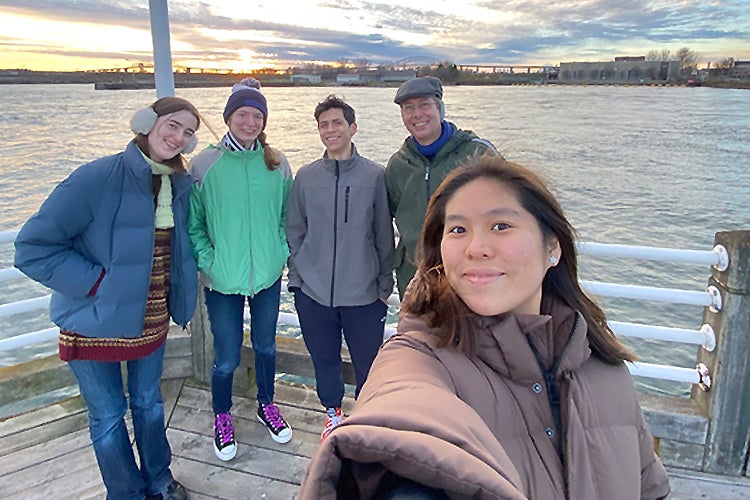
Audrey Foy, Lydia Dillenbeck, Alexander Gomez Sanchez, Reid Locklin and Zoe Wong in Sault Ste. Marie, Ont. (photo by Zoe Wong)
For both Dillenbeck and Wong, visiting Shingwauk was difficult at times but, ultimately, intensely meaningful.
“As an international student from Hong Kong, I am very grateful for this opportunity to primarily engage with the origins of Canadian land – a country I am currently residing in,” says Wong.
“This was a rare and deeply impactful experience as I unexpectedly and consistently find cross-cultural connections between the Indigenous community and my East-Asian roots. This trip was no doubt one of the most reflective and insightful learning experiences I have ever had.”
“When we learn in the classroom, we have an emotional buffer,” says Dillenbeck. “We discuss and analyze serious topics without fully realizing their impacts. At Shingwauk, that emotional buffer was stripped away.
“That residential school may have been a cold, dark and traumatic place, but the people we met have transformed it into a place of healing, growth and hope. I’m grateful that I was able to witness it and be a part of it. I will always remember that history is not just text, but real lived experiences.”



